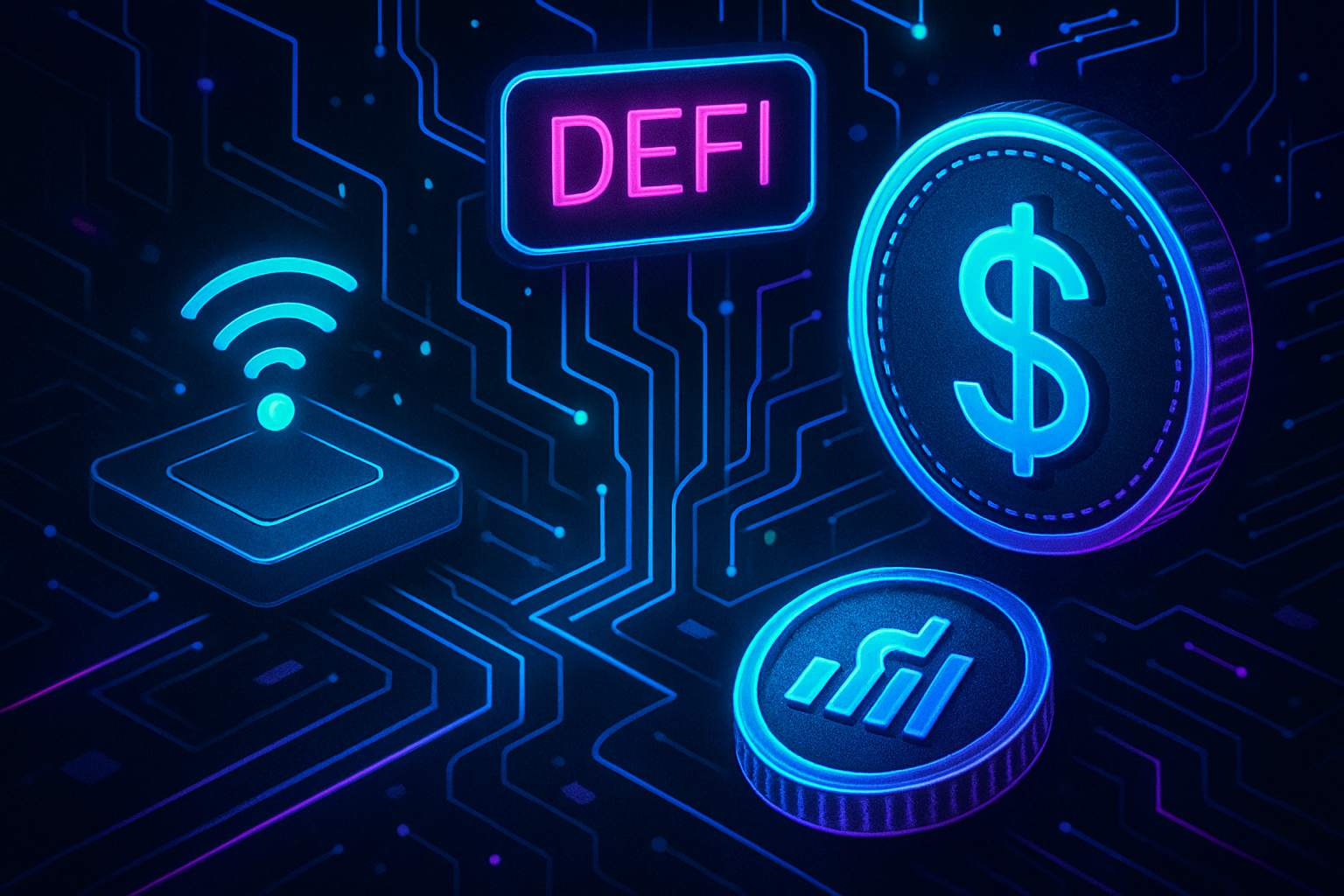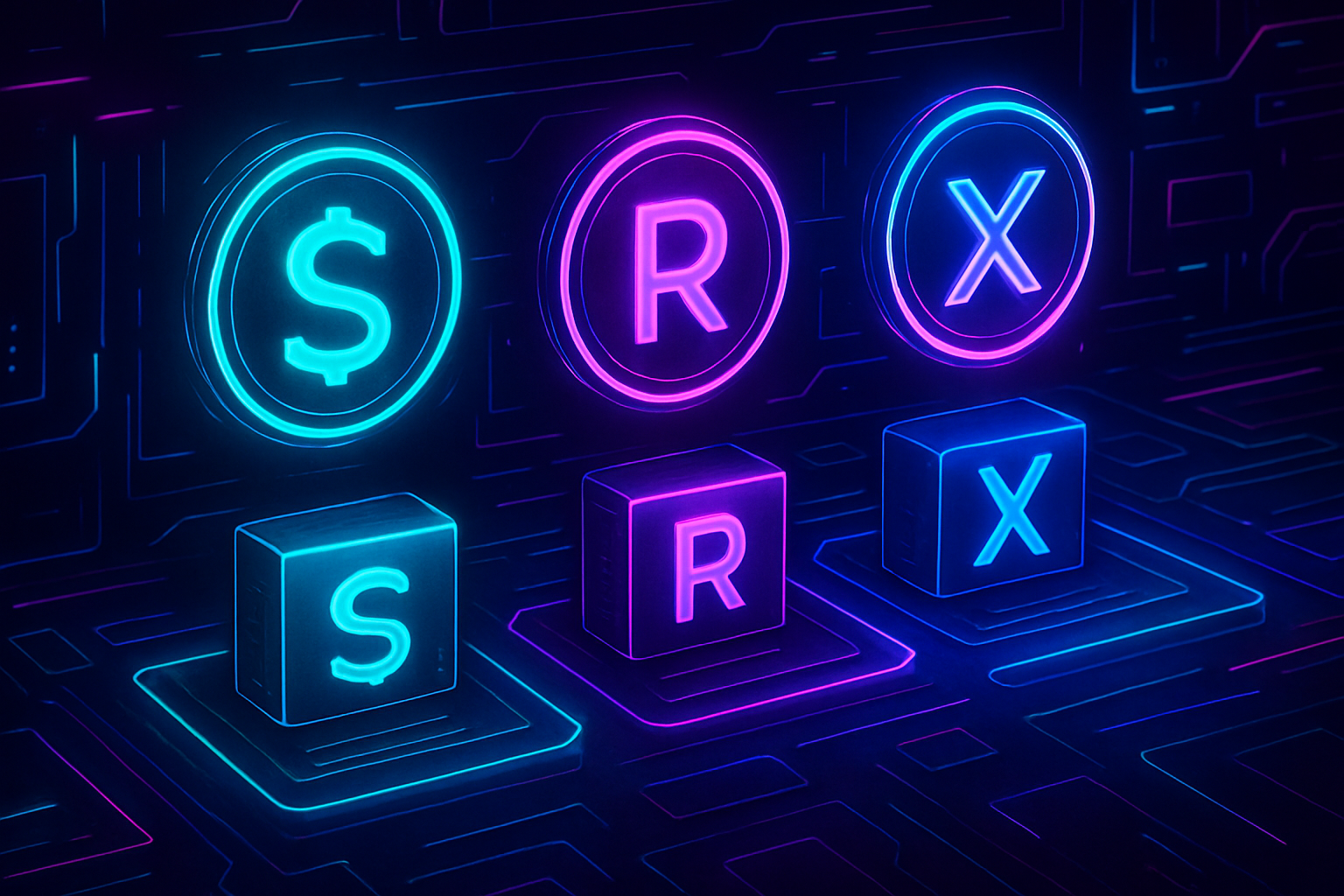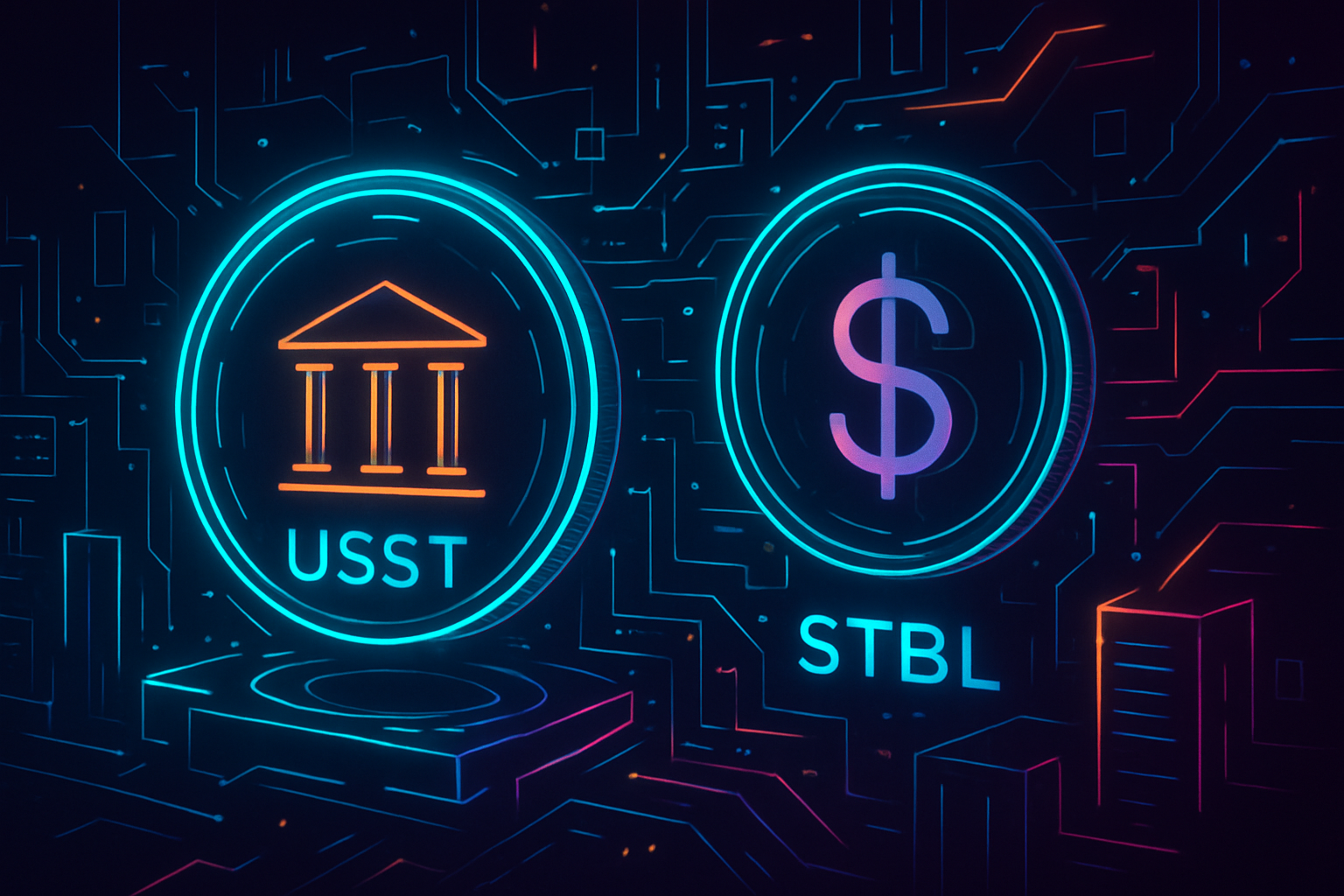How STBL’s Yield Separation Model is Redefining Stablecoin Passive Income for DeFi Investors

Stablecoins have long promised a safe harbor in the volatile world of crypto, but most traditional models fall short when it comes to maximizing passive income. Enter STBL’s yield separation model, an innovation that is rapidly gaining traction among DeFi investors seeking both liquidity and sustainable yield. With STBL currently trading at $0.4271, its unique architecture is reshaping how passive income is generated from stablecoins, especially as regulatory scrutiny intensifies and the demand for real-world asset (RWA) backing grows.
Breaking Down the USST/YLD Model: Liquidity Meets Yield
The heart of STBL’s approach lies in its dual-asset system: USST and YLD. When users deposit approved RWAs, think U. S. Treasury Bills or private credit instruments, they mint USST, a stablecoin pegged 1: 1 to the dollar and fully backed by these tokenized assets. Alongside USST, users receive a YLD token, which is a non-fungible token (NFT) representing their right to claim yield from the underlying collateral.
This separation means you can deploy USST across DeFi protocols for trading, payments, or as collateral, without sacrificing your ability to earn passive income. The actual yield accrues to your YLD token, which can be held or traded independently. This design elegantly solves a persistent problem: in most stablecoin systems, you either lock up your capital for yield or sacrifice earnings for liquidity. With STBL, you get both.
How Yield Flows: From Real-World Assets to Your Wallet
The engine behind STBL’s sustainable yields is its focus on real-world assets (RWA). Instead of relying on inflationary tokenomics or unsustainable incentives, all yield distributed to YLD holders comes directly from interest payments generated by the underlying RWA collateral. This not only grounds returns in tangible value but also aligns with growing regulatory expectations around transparency and compliance.
For example, if you deposit $10,000 worth of U. S. Treasuries into the protocol, you’ll mint 10,000 USST and receive a corresponding amount of YLD. As those Treasuries pay interest over time, your YLD accrues a proportional share of that yield, which can be claimed or sold on secondary markets at any time.
Navigating Compliance: Why Separation Matters More Than Ever
The regulatory landscape for stablecoins is evolving fast. Recent legislation like the U. S. GENIUS Act prohibits issuers from paying interest directly to stablecoin holders, a move that has forced many protocols back to the drawing board. STBL’s model sidesteps this challenge by splitting transactional liquidity (USST) from yield accrual (YLD), allowing users to earn passive income without breaching legal boundaries.
This architecture positions STBL as one of the few GENIUS Act-compliant solutions in the market today, a critical advantage as institutional adoption ramps up and regulators scrutinize every corner of DeFi.
STBL (STBL) Price Prediction 2026-2031
Projected Price Ranges Based on Yield-Separation Adoption, RWA Integration, and Regulatory Trends
| Year | Minimum Price (Bearish) | Average Price (Base Case) | Maximum Price (Bullish) | % Change (from 2025 Avg) | Market Scenario Insights |
|---|---|---|---|---|---|
| 2026 | $0.40 | $0.48 | $0.56 | +12% | Adoption of RWA-backed stablecoins grows, regulatory clarity improves, STBL maintains compliance. |
| 2027 | $0.42 | $0.53 | $0.65 | +24% | DeFi integration accelerates, more RWAs added, yield separation model gains traction. |
| 2028 | $0.45 | $0.60 | $0.74 | +41% | Institutional adoption begins, competition increases but STBL’s compliance edge attracts capital. |
| 2029 | $0.47 | $0.67 | $0.85 | +57% | Global stablecoin frameworks emerge, STBL scales with multi-chain support and new RWA classes. |
| 2030 | $0.50 | $0.74 | $0.98 | +74% | Yield tokenization becomes mainstream in DeFi, STBL governance upgrades drive ecosystem growth. |
| 2031 | $0.52 | $0.83 | $1.12 | +94% | STBL cements position as a leading compliant yield-separating stablecoin, regulatory green lights in major economies. |
Price Prediction Summary
STBL is poised for steady growth as its yield separation and RWA-backed model gains DeFi and institutional adoption. Prices are expected to trend upward, with the protocol’s compliance-first approach and innovative yield structure providing resilience against regulatory shocks. While competition and market cycles may introduce volatility, STBL’s fundamentals suggest increasing demand and value through 2031.
Key Factors Affecting STBL Price
- Adoption of real-world asset (RWA) collateral in DeFi protocols.
- Regulatory clarity, especially in the US and EU, regarding yield-bearing stablecoins.
- Expansion of the STBL ecosystem and cross-chain integrations.
- Growth of passive income demand among DeFi and institutional investors.
- Potential competition from other RWA-backed or yield-separating stablecoins.
- Macroeconomic factors affecting yields on underlying assets (e.g., US Treasuries).
- Community governance and protocol upgrades impacting risk and innovation.
Disclaimer: Cryptocurrency price predictions are speculative and based on current market analysis.
Actual prices may vary significantly due to market volatility, regulatory changes, and other factors.
Always do your own research before making investment decisions.
The Community Factor: Governance and Transparency
No modern DeFi protocol is complete without decentralized governance, and here too, STBL stands out. Holders of the governance token can vote on crucial decisions such as reserve allocation, risk parameters, and fee structures. This empowers the community while ensuring ongoing transparency into how yields are sourced and distributed.
For investors, this means a greater degree of control and alignment with the protocol’s long-term vision. As risk parameters and reserve compositions evolve, governance participants can directly influence how the protocol adapts to changing market conditions or regulatory shifts. This community-driven approach fosters trust and resilience, qualities that are often lacking in centralized stablecoin models.
Key Advantages of STBL’s Yield Separation Model
-

1. Dual-Asset System for Flexibility: STBL introduces USST (a liquid, USD-pegged stablecoin) and YLD (a yield-claiming NFT), letting users maintain liquidity with USST while earning passive income via YLD—no need to sacrifice one for the other.
-

2. Real-World Asset (RWA) Backing: USST is fully collateralized by tokenized RWAs such as U.S. Treasury Bills and private credit, providing transparency and stability beyond algorithmic or crypto-only stablecoins.
-

3. Regulatory Compliance: By separating yield (YLD) from the stablecoin (USST), STBL aligns with regulations like the U.S. GENIUS Act, allowing users to earn passive income without regulatory risk.
-

4. Sustainable, Non-Inflationary Yield: YLD holders earn yield directly from interest on real-world assets, not from inflationary token emissions, ensuring sustainable passive income for investors.
-

5. Decentralized Governance and Transparency: The STBL governance token empowers the community to set policies, adjust reserves, and oversee risk, fostering transparency and user participation in protocol evolution.
-

6. Enhanced DeFi Utility: USST can be used across DeFi platforms for trading, lending, and collateralization while YLD accrues yield separately, unlocking new strategies for passive income.
Transparency is further enhanced by on-chain reporting of collateral, yield flows, and governance actions. Every USST minted is auditable against its RWA backing, while YLD accruals are visible in real time. This level of clarity helps users verify that their passive income truly originates from real-world economic activity, not opaque or inflationary mechanisms.
STBL at $0.4271: Opportunities and Considerations
With STBL currently priced at $0.4271, the market is watching closely to see how adoption of the USST/YLD model will impact both liquidity and yield dynamics in DeFi. While price fluctuations are natural as the ecosystem matures, the protocol’s focus on RWA backing and compliance could provide a stabilizing effect over time. For those seeking passive income with stablecoins, understanding these price movements, and what drives them, is crucial.

It’s also worth noting that secondary markets for YLD tokens may introduce new strategies for yield optimization or risk management. Savvy investors can trade YLD independently from their USST holdings, potentially capitalizing on market demand for passive income streams or hedging against future rate changes.
How to Get Started: A Practical Checklist
If you’re considering exposure to STBL’s ecosystem, begin by reviewing the approved list of RWAs accepted as collateral and familiarize yourself with current governance proposals through the official documentation at docs.stbl.com. Pay attention to protocol updates as new asset types or risk parameters are introduced, these can directly impact your yield opportunities and risk profile.
The bottom line? By decoupling liquidity from yield through its dual-token architecture, and anchoring returns in real-world assets provides STBL is carving out a new paradigm for passive income in DeFi. For forward-thinking investors who prioritize transparency, compliance, and sustainable returns, this model offers a compelling alternative to legacy stablecoins.




